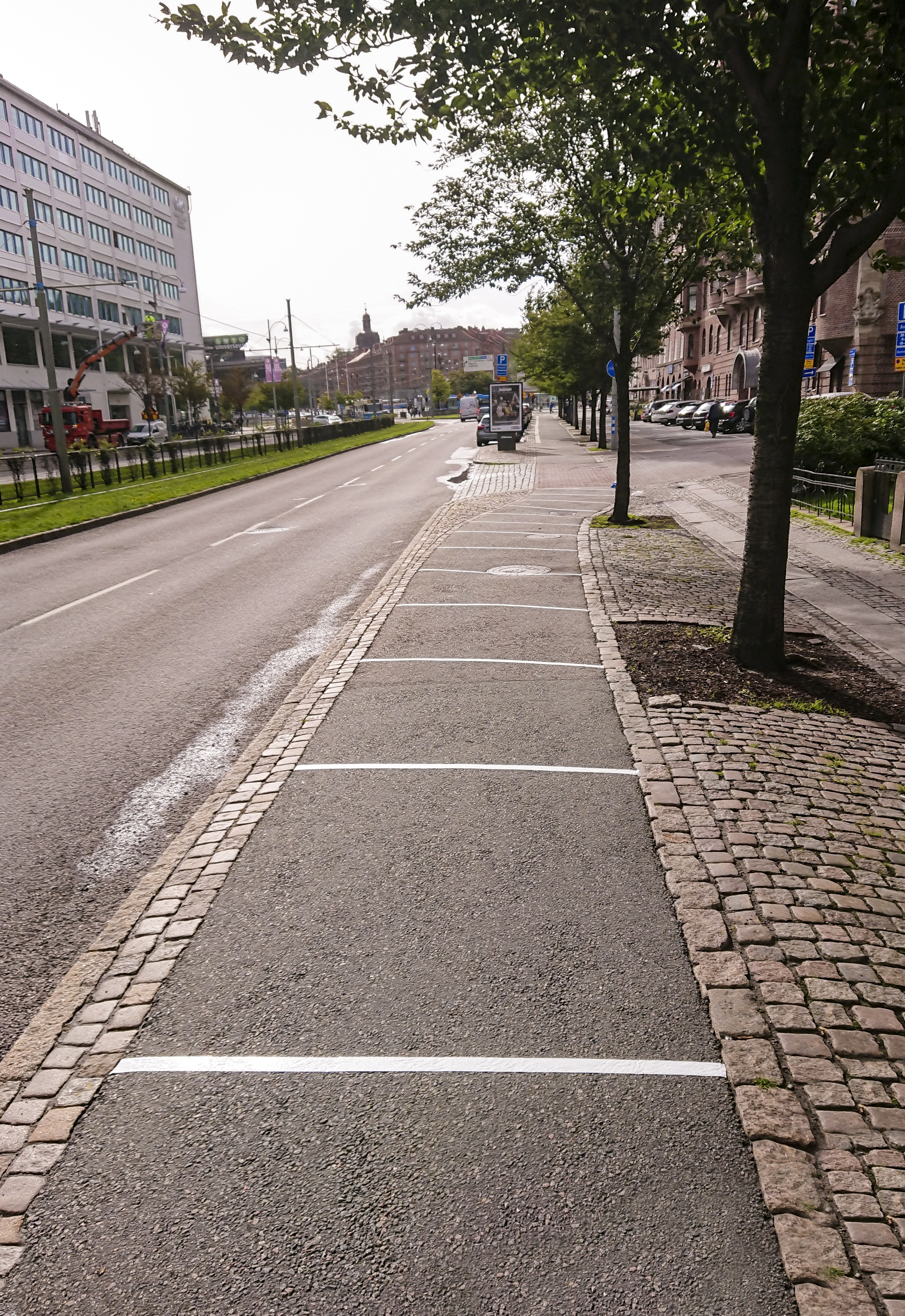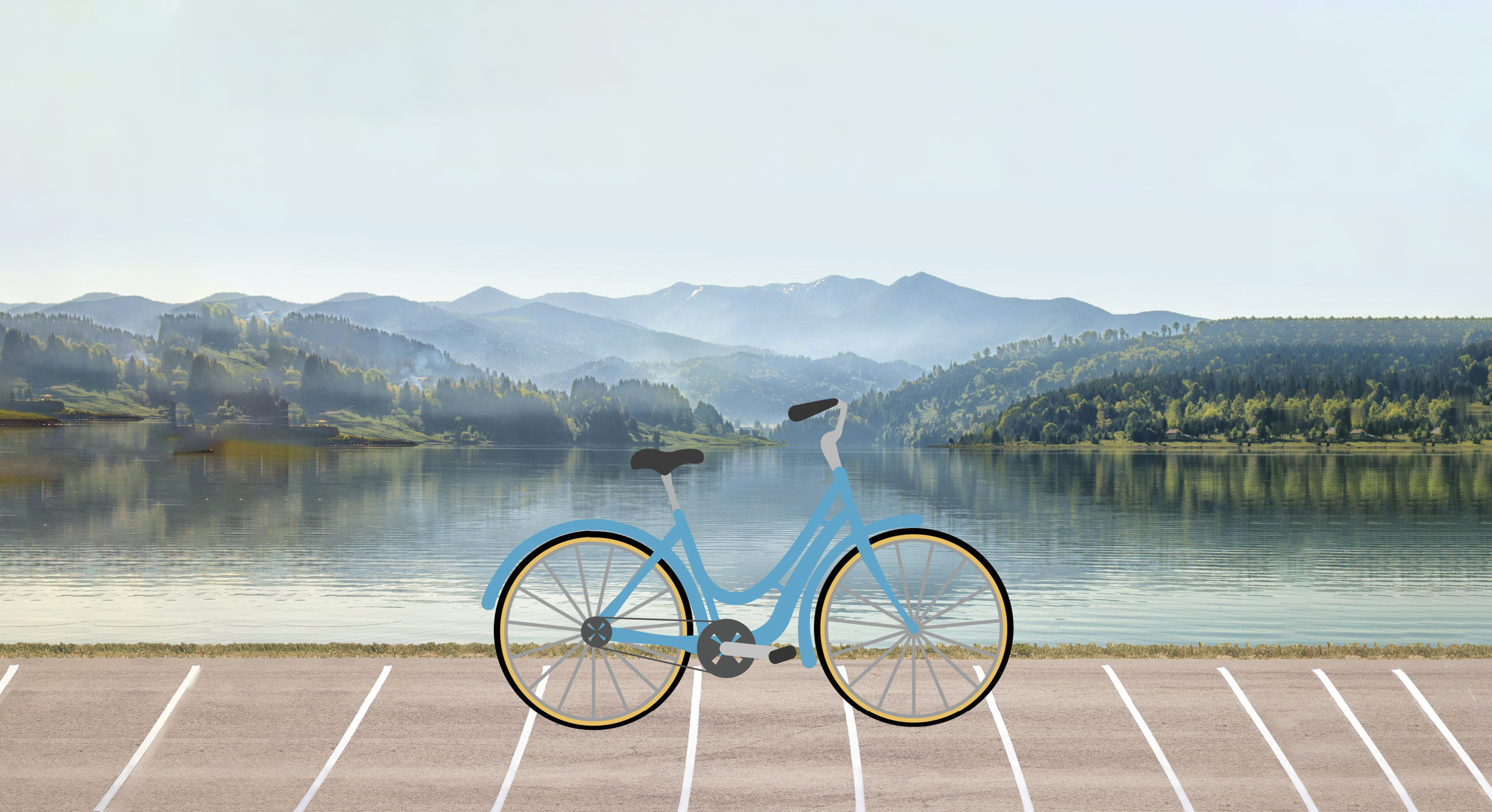Traffic nudge increases cyclists’ safety margins
There have been many attempts to “slow down” cyclists in general by using rumble stripes or bumps, but these hard, punishing measures have little effect. Still, cyclists are unprotected against cars, and many accidents occur at intersections. MeBeSafe made a cyclist-centred nudge that can help twice as many to adapt a safer speed when it’s really needed.
Bicycling is a healthy and sustainable way of moving around our globe, avoiding congestion in both the city streets and in your body. The amount of cyclists has risen during the recent pandemic, as it is a natural way to keep distance to others in an outdoor environment. But when the pandemic is over, it is important that cycling stays attractive, so that reduced risk of infection is not the main selling point. Basically, cycling must be attractive to people for them to cycle more.
More or less – a well-functioning infrastructure may ‘nudge’ people towards biking more. It’s therefore unreasonable to keep building hard measures like rumble stripes, as cyclists must be able to get where they want within in a reasonable time without having to slow down. Except in hazardous intersections.
There are certain spaces where different types of vehicles share the road, and these are the most dangerous in traffic. Here everybody has been taken out of their comfort zone – without knowing it. Many keep on behaving as if they were the only type of vehicle there, with disastrous consequences. MeBeSafe have developed a nudge for car drivers to help them spot cyclists in time and react (see page 21). But to make cyclists something more than a passive actor and acknowledge their role as a real actor in traffic, we need to give them the ability to act as well.

MeBeSafe have investigated how cyclists can be made more aware of dangerous intersections and adapt their speed to cope with potential dangers lurking behind a hidden corner. The process has been made in close collaboration with cyclists to find a nudge with good potential and great acceptance. This led to all haptic measures – things you can feel when you bike – being disregarded. Rumble stripes or bumps had close to no effect on speed, but a very large effect on disapproval. Indeed, many cyclists would even take another route altogether to avoid haptic obstacles.
The MeBeSafe cyclist nudge is instead completely visual. It consists of a number of flat stripes – made of road tape – that have been set up from 20 meters before a dangerous intersection. The stripes run across the road, like a zebra crossing with slim bands, but the gaps between the stripes are gradually reduced. The distance goes from 2 meters, down to almost half a meter. But as it is gradually narrowing down, our mind does not understand the difference, and instead registers it as an illusion of speed. And illusions persist even if we know that they are fake. So, we think we are going faster than we really are and will therefore naturally slow down.
The nudge has been tested over time, both in Sweden and in the Netherlands, and leads to an excess speed decrease that’s on average 3-7% depending on the location. Twice as many cyclists slow down a safe amount when the nudge is installed, compared to when it’s not. The reduced speed over the distance leading up to the intersection results in a larger timespan in which drivers and cyclists can spot one another – and in turn reduce the amount of accidents.
Acceptance from cyclists has been found to be very high – both in pre-studies as when being put up in actual commuting traffic. More than 9 out of 10 cyclists appreciate having the nudge in front of dangerous intersections, where it makes sense to approach with a lower speed. The remaining 1 out of 10 does not dislike it per se, but is without exception disapproving because they did not understand the purpose and therefore found it unnecessary.

Pre-studies have found that the cyclist-nudge is sometimes seen, and sometimes not – the effect on speed is still the same. More or less, it acts on our subconscious minds, leading to a larger potential in the long term. This shows that the illusion works without being overly prominent. Indeed, it has been found not to draw any attention to the lines themselves but instead preserving cyclists’ attention on the surrounding traffic.

As the nudge is very simple to build – made of flat road tape, that can be permanently attached to a road without any machines – it is also very cost-effective. In about 20 minutes, it can be up and running. It’s not surprising that this simple but effective measure has attracted attention from stakeholders of cyclist safety. It’s after all a soft measure that not only makes traffic safer but is also appreciated by people.
As long as the nudge is put up where it really makes sense, to build a sustainable future where biking is safe and better prioritised, the effect is nothing but positive. And in the end, that is what nudging is all about – helping people to make a better choice for themselves, for others and for the future.
